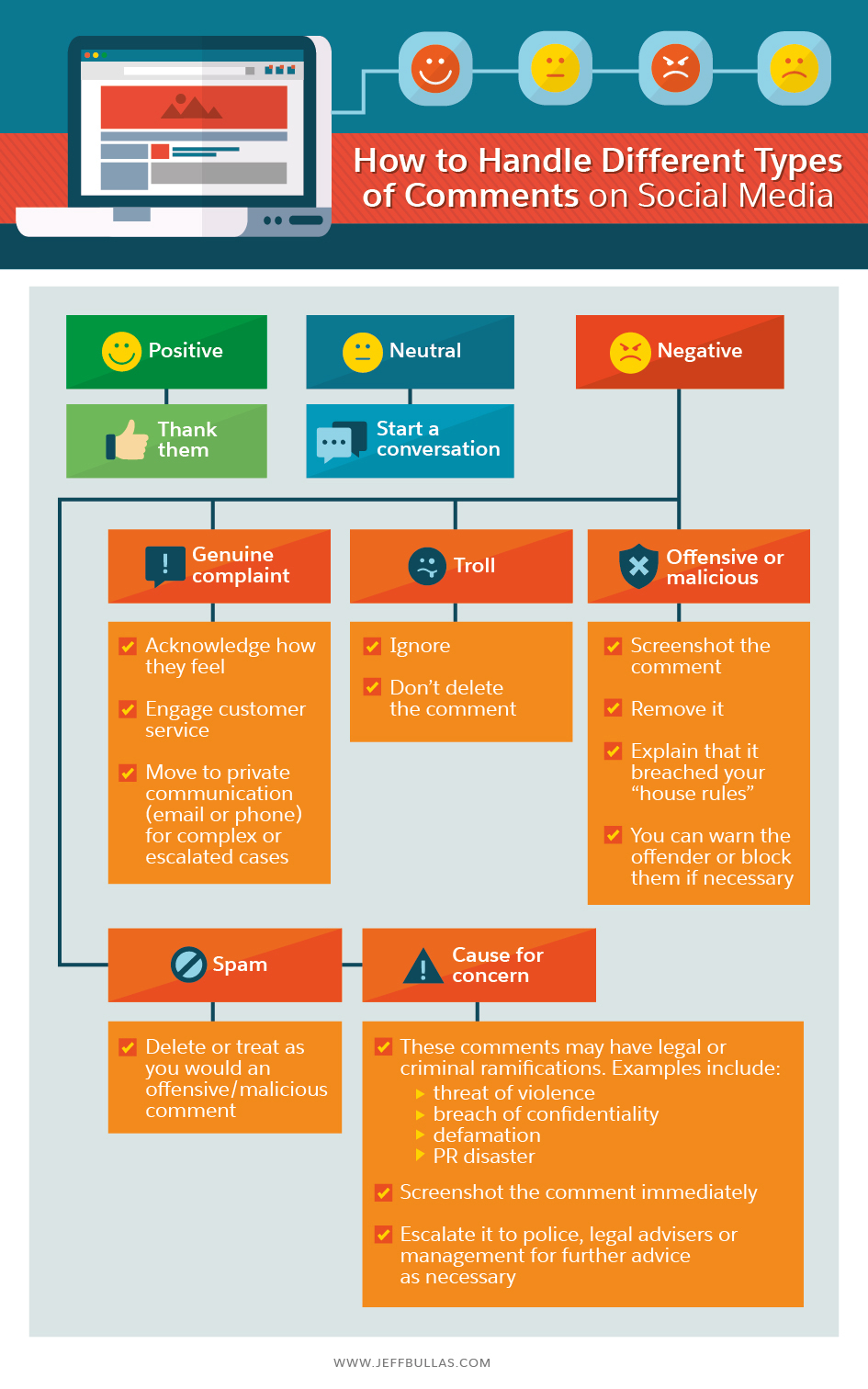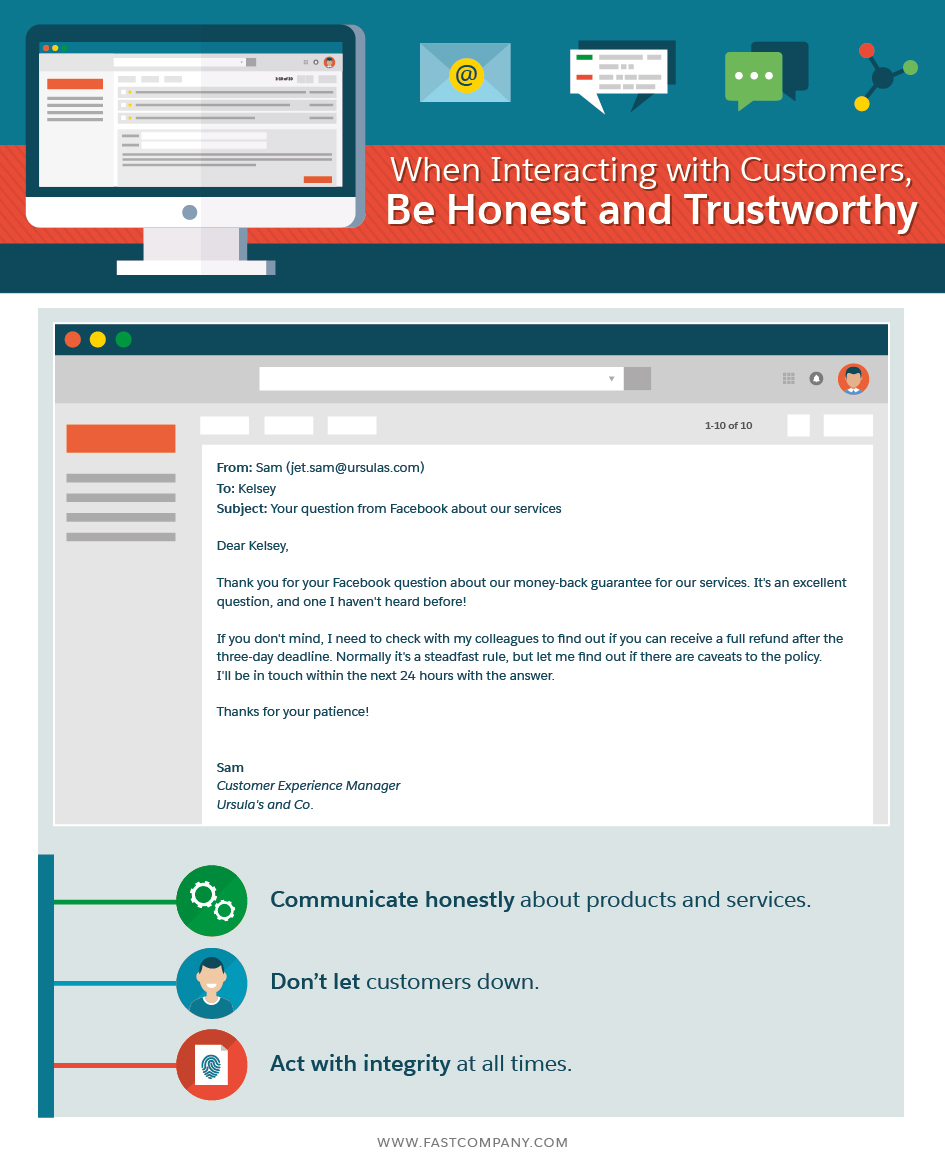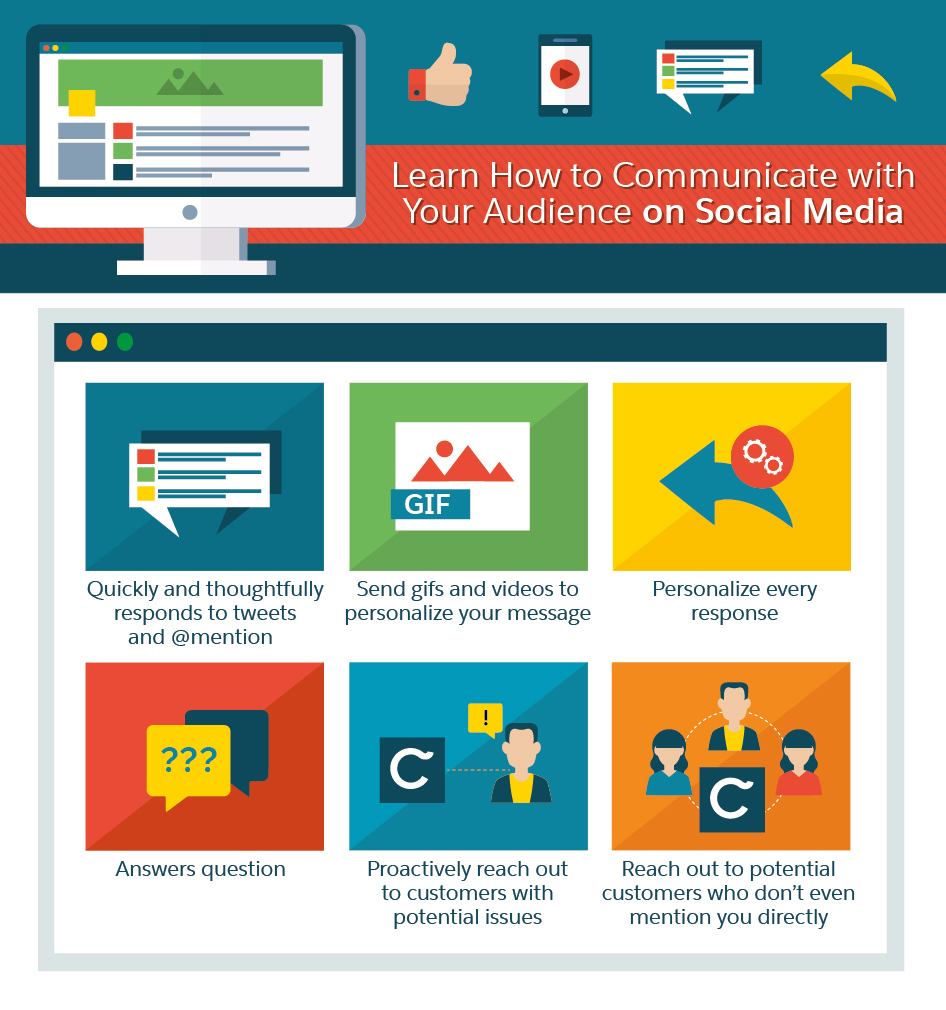How to Handle Every Type of Comment on Social Media



Whether they're on social media or your blog posts, comments can be tricky. This article will help you write your response.

Kelsey Jones
As your audience grows, so will the inflow of comments. Brands have come to realize that the larger your presence, the more people that look at your content with a critical eye.
No matter your overall goals for social media, you must be ready to answer the individuals who respond to your posts. Below are some ways to handle the comments that may come your way.
Respond in Your Brand’s Voice
A great social media manager knows how to handle both positive and negative comments while keeping the brand’s tone and voice consistent. For instance, a funky donut shop like Voodoo Doughnut is going to answer comments much differently than a national bank like Wells Fargo. It’s important to be consistent with your voice on social media: It should match what you convey through customer service, your website, and any other advertising or channels where a customer may be exposed to the brand.
How to Handle Different Types of Comments on Social Media
- Positive
- Thank them
- Neutral
- Start a conversation
- Negative
- Offensive or malicious
- Screenshot the comment
- Remove it
- Explain that it breached your “house rules”
- You can warn the offender or block them if necessary
- Troll
- Ignore
- Don’t delete the coment
- Genuine complaint
- Acknowledge hoy they feel
- Engage costumer service
- Move to private communication (email or phone) for complex or escalated cases
- Spam
- Delete or treat as you would an offensive/malicious comment
- Cause for concern
- These comments may have legal or criminal ramifications. Examples include:
- Threat of violence
- Breach of confidentiality
- Defamation
- PR disaster
- Screenshot the comment inmmediately
- Escalate it to police, legal advisers or management for further advice as necessary
- These comments may have legal or criminal ramifications. Examples include:
 Respect Their Emotions
Respect Their Emotions
It’s inevitable: You will come across social media comments that are negative or disappointing. Maybe they are complaining about a product or an experience they had with your company, or perhaps they just don’t like the content you post. Sometimes these comments are warranted, but sometimes your company is just a target for an angry consumer, whether those thoughts are fair or not.
One of the best ways to handle this is to repeat this mantra: Respect their anger. This goes back to one of the principles of self-development and psychology: emotional competence. The most emotionally competent people not only recognize their own emotions, but they also identify and honour others’. This is key in social media management.
Even when you don’t understand where people are coming from, it’s important to respect how they feel. Their emotions are a product of their environment and personal experiences. When people are upset, they often just want to feel validated. SurveyMonkey recommends not only practicing empathy, but also showing adaptability and using clear communication to provide great customer service.
A trick that works well is repeating what they said to make sure you fully understand the situation. Try to sympathize and offer an honest apology, even if your company didn’t do anything wrong. Then offer a clear solution. Your delivery is of utmost importance.
When Interacting with Customers, Be Honest and Trustworthy
- Communicate honestly about products and services
- Don’t let customers down
- Act with integrity at all times

If It’s Already Been Asked, Answer It Again (Then Create Content Around It)
Many times, especially when you’re handling a growing or large brand, you’ll get the same questions from new or confused customers. If you have to repeatedly answer the same questions over and over, it’s worth creating content around it.
Take comments from your social media users and turn them into content, and think of how you can provide content that’s a valuable service and invites your customers and fans to be part of your brand’s story. There are two ways to go about this: You can create an answer library, or you can create blog and FAQ content.
Create an Answer Library
Facebook lets you save replies that you can send to users via Messages. Be sure to personalize the response and use your company’s voice so customers don’t feel like they are being fed a stock message.
Outside of Facebook, create a cloud-based document (like a Google spreadsheet), a template in your marketing automation software, or another method to store pre-crafted answers. This allows team members to know how to properly answer questions, and is especially helpful for employees who are cross-training or covering for someone outside of their normal scope of knowledge.
Create Blog and FAQ Content
Capturing frequently asked questions and turning them into blog content or an FAQ library (preferably both) can be a great way to build content for your website. It can also help ease some social media questions, as most users will search for an answer first before reaching out via social media.
Have your social media managers work with your content team to facilitate new ideas for the website. This new content should help alleviate stress and frustrations for both your customers and your employees.
Don’t Forget the Little Things
People appreciate hearing back from the companies they support with their business. When they ask questions, comment on posts, or offer their opinion, they like to know they’ve been heard, which is evident when the company’s responses are personalized.
Just typing a response to users may not be enough to make an impression, no matter how polite you are. Personalizing your answer and making it interactive through gifs, hashtags, and @mentions could make all the difference.
Learn How to Communicate with Your Audience on Social Media
A Quick Case Study on Casper
- Casper is, according to its Twitter bio, “The sleep startup that created the perfect mattress, sheets, and pillow for everyone.”
- 64.6 thousand followers
- Quickly and thoughtfully responds to tweets and @mentions
- Has sent hundreds of gifs
- Personalizes every response
- Answers questions
- Proactively reaches out to customers with potential issues
- Reach out to potential customers who don’t even mention Casper directly

Gifs and hashtags, when appropriate, are great ways to personalize content in your brand’s voice. A perfect example is the mattress company Casper, which only sells its products online. A colleague of mine tweeted his excitement about his new mattress, and we all ended up in a conversation. Casper answered in gif form, which fit their modern way of selling mattresses, and was perfect because my colleague and I use gifs in tweets regularly. Even when he tweeted again, Casper was quick to respond with a link to a song—a great response for a millennial.
Of course, solely responding in gifs and YouTube videos doesn’t work for every situation or company. But in this case, Casper clearly knows their audience and what works when communicating with them. In addition to gifs, using the right hashtags (if they were included in the original message and are useful), as well as @mentioning the user by name to make sure they see your response, are also key to crafting a great social media response.
Be Accessible
Many customers now prefer to tweet instead of call a company. Depending on your company’s capabilities and size, having a team to handle social media replies as quickly as possible (often outside of business hours and on weekends) and using a management tool can make a major impact on customer sentiment.
Besides Facebook Pages and Twitter, social media managers need to think of additional platforms where their customers may want to reach out, and respond accordingly. For example, flash-sale site Zulily sends order updates through Facebook Messenger.

Customers can also send requests directly on Messenger to learn about order updates or ask other questions. According to Engadget. some of these interactions are automated through bots, which were launched on Facebook this year. Other platforms that blur the line between social media and instant messaging include WhatsApp, Snapchat, and even Instagram direct messaging.
When you respond to messages, navigate your way through the conversation using your brand’s voice. Be sure to honor their emotions, listen to what they have to say, and answer in a personalized, memorable manner. The more you engage with your audience, the better the experience.
Share “How to Handle Every Type of Comment on Social Media” On Your Site






















